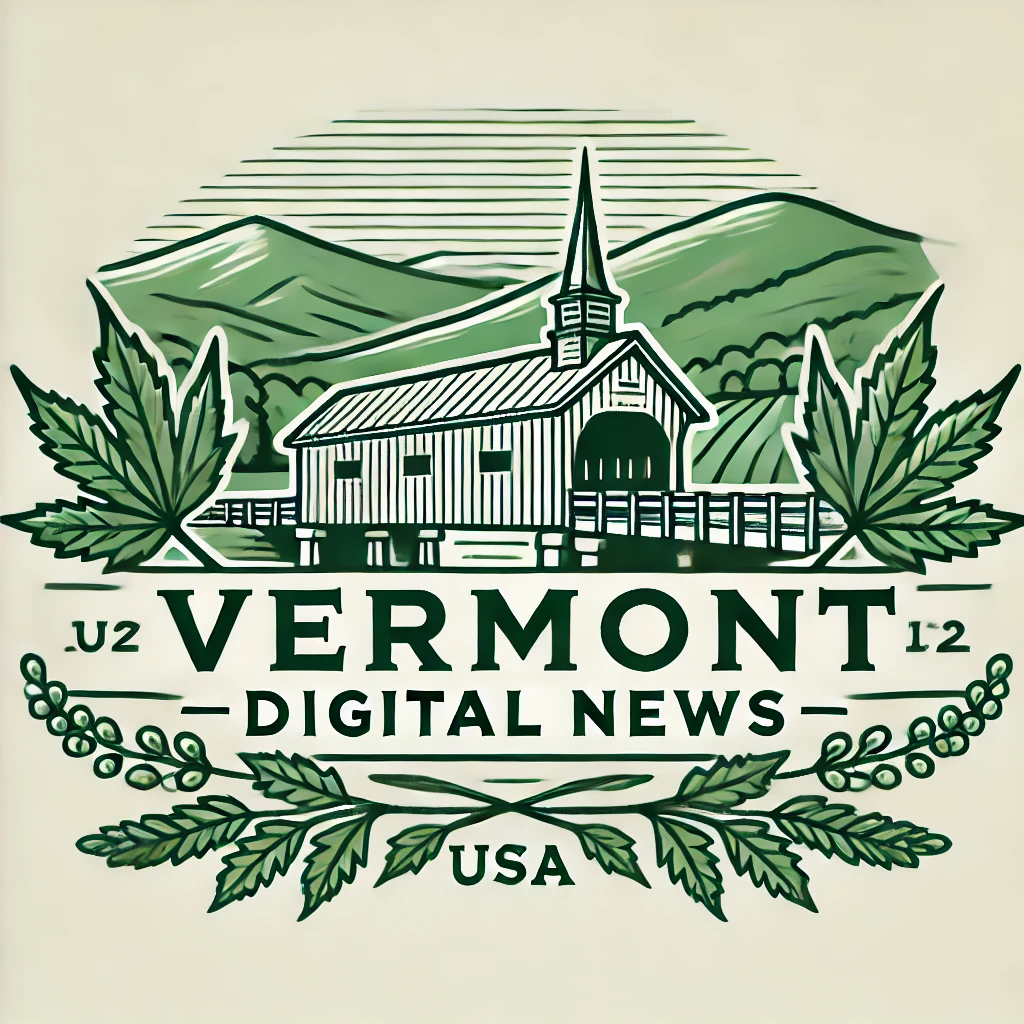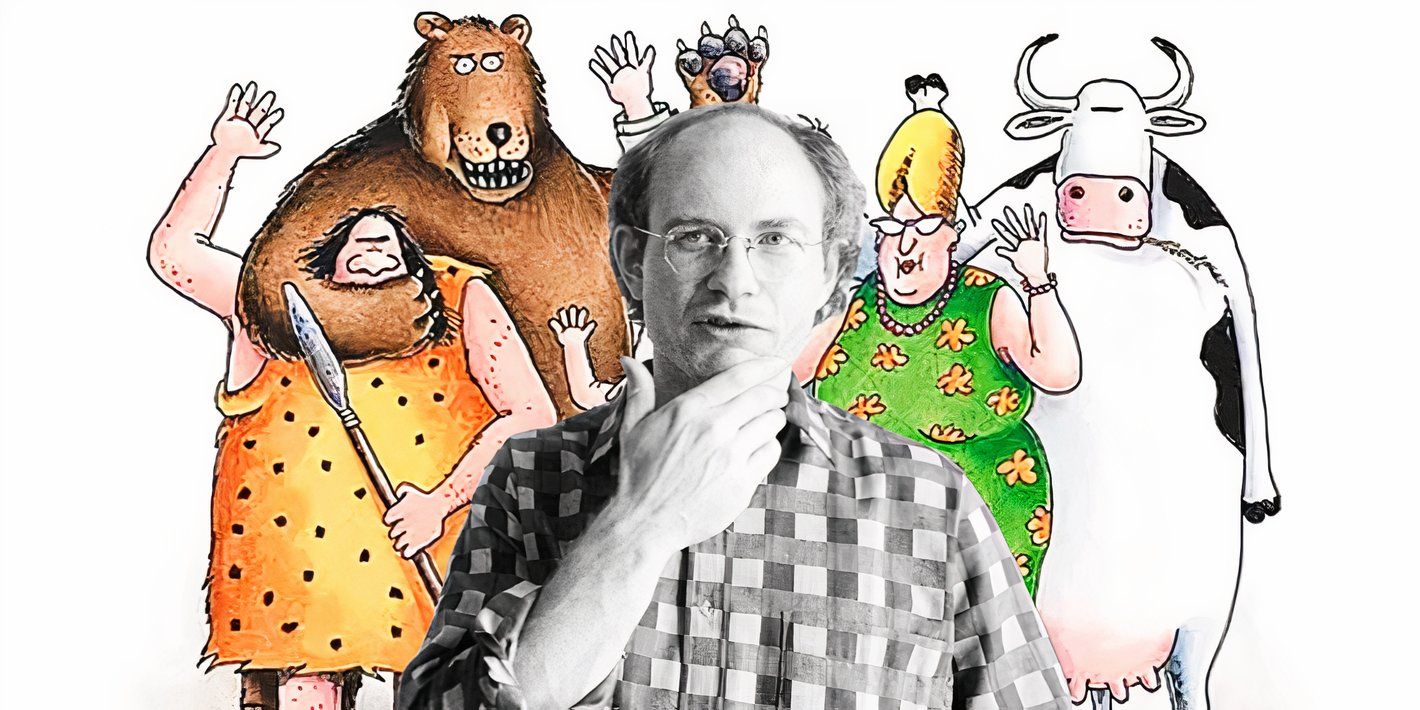The Three Acts Of Far Side Creator Gary Larson’s Career, And What To Look Out For In Each
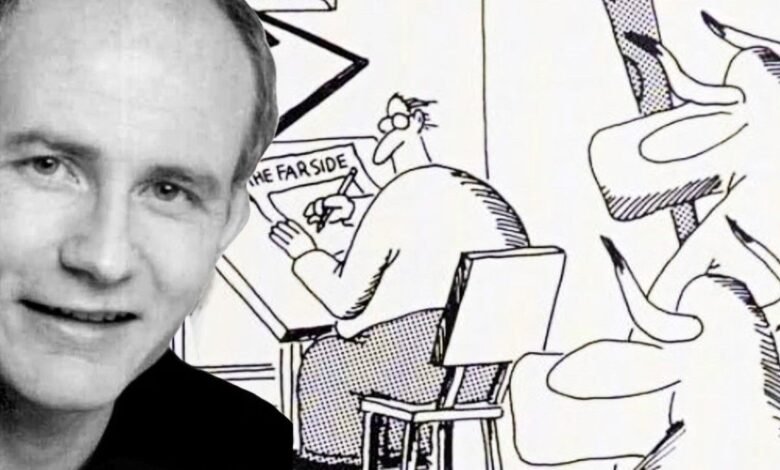
Far Side creator Gary Larson’s career can be divided into three periods (early, middle, and late) which each offer their own insights into what made his oddball cartoon a household name. Over the course of fifteen years, The Far Side went from a regional novelty, to a national sensation, to a cultural institution, and each of these can be considered to represent a distinct phase of the comic’s history.
The three “acts” of Larson’s career span the years 1980-1984, 1985-1988, and 1990-1994, and include an “interlude” of sorts, in the form of Gary Larson’s extended hiatus from producing The Far Side, which extended through all of 1989.
The Far Side’s early years were marked by Gary Larson carving out a niche for himself in the comic industry, which led to massive success in the mid-1980s. It also led to creative burnout; when Larson resumed work in 1990, he produced some of The Far Side’s best cartoons, but it was only a matter of time until he called it quits.
Gary Larson’s Formative Years And The Far Side’s Rise To National Success
1980-1984
The Far Side debuted in the San Francisco Chronicle at the start of 1980; it was actually a rebranded version of Gary Larson’s original comic, Nature’s Way, which had recently been canceled by The Seattle Times. In its early years, The Far Side was published in only a select few regional newspapers, meaning its audience was geographically limited at first. Early Far Side cartoons put Larson’s surreal, and often cerebral sense of humor to the test, and while his cartoons attracted their share of criticism, it also proved that the public had an appetite for his brand of comedy.
Every “rule” that The Far Side had to speak of was established, but also broken, in the formative years of the comic’s run.
The first few years of The Far Side established its basic formula, while introducing its eclectic set of recurring subjects and repeat characters: cows, scientists, the end of the world, chickens, obscure pop culture references, bad puns, good puns, bears, sharks, nerdy kids, cavemen named Thag, aliens, cowboys, dark irony, talking insects, surreal suburban imagery, and so on. More importantly, in those early days, The Far Side taught its readers how to read it. It conditioned readers to routinely expect the unexpected, while also acclimating them to Gary Larson’s idiosyncratic mindset.
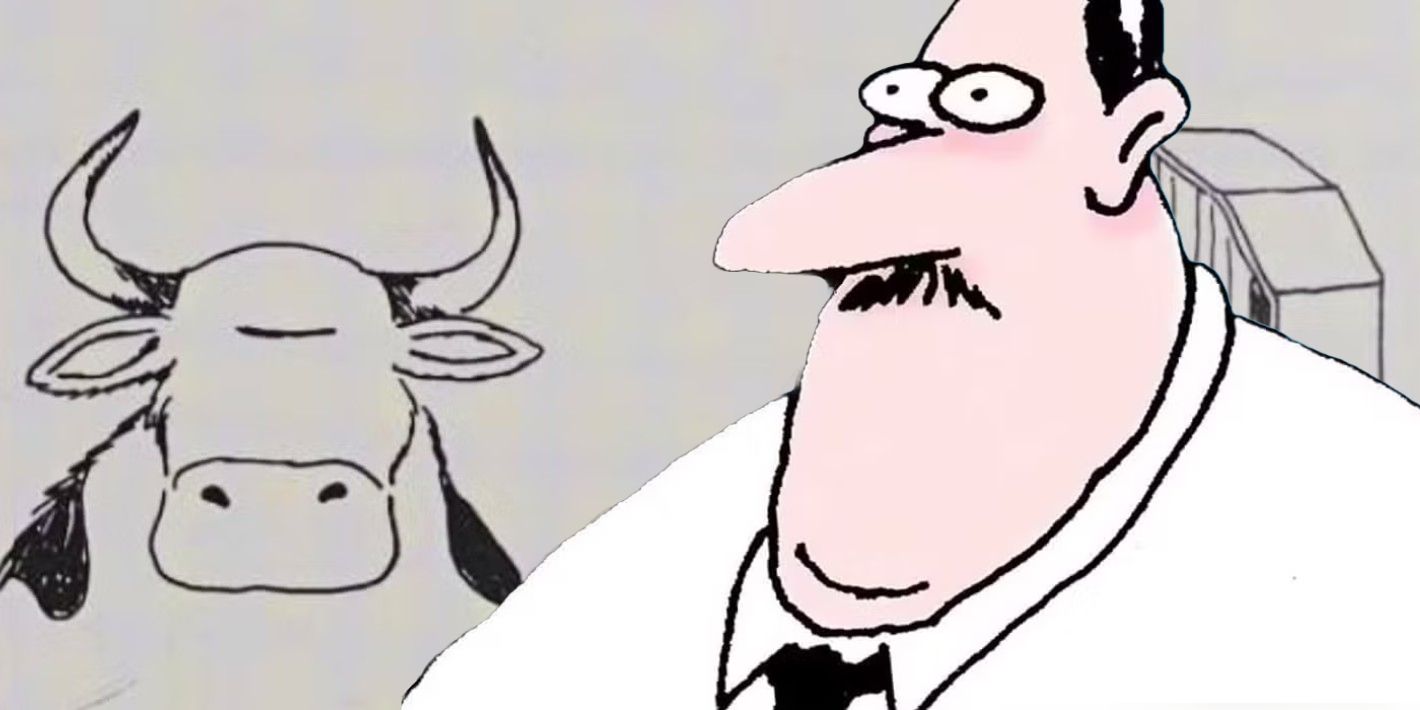
Related
12 Far Side Comics That Helped Make The Series A Massive Hit
The Far Side steadily grew in popularity in its early years, achieving nationwide success in the mid-80s; these early cartoons helped make it a hit.
Every “rule” that The Far Side had to speak of was established, but also broken, in the formative years of the comic’s run. This was part of the excitement of Gary Larson as a creator, especially in the first five years of The Far Side, which was the era when the comic was at its most truly unpredictable.. This was a period of experimentation for Larson; as much as his sense of humor and artistic style came out of the gate fully-formed, The Far Side’s “first act” was still a process of refinement.
The Far Side Becomes A Pop Culture Phenomenon, But Gary Larson Battles Creative Burnout
1985-1988
By the mid-1980s, The Far Side had experienced near-exponential growth year-over-year, in terms of the number of newspapers it was carried in, and the number of readers exposed to Gary Larson’s work on a daily basis. This was the era of The Far Side’s national exposure, when the comic’s unique style and unparalleled weirdness began to attract media attention, turning it into more than just a cartoon. That is, The Far Side became a phenomenon. It entered the culture zeitgeist and put down roots, eventually turning its creator into a household name.
This is arguably the most “dialed-in” point in The Far Side’s history, when, on a day-to-day, week-to-week basis, the comic can be said to have its highest success rate in terms of yielding laugh-out-loud reactions.
This is the “act” of Larson’s career that ensured his work would continue to be a source of fascination for decades to come. On a creative level, it was a prolific period for Gary Larson, at least at first. This is arguably the most “dialed-in” point in The Far Side’s history, when, on a day-to-day, week-to-week basis, the comic can be said to have its highest success rate in terms of yielding laugh-out-loud reactions from readers. Many of The Far Side’s most highly regarded panels hail from this era of its publication.

Related
These Far Side “Sequel” Comics Prove Gary Larson Was Playing the Long Game
The Far Side didn’t have recurrin characters, but Gary Larson did produce the occasional “sequel” comic, including callbacks to his earliest cartoons.
Yet while he was riding a creative high, Gary Larson had to grapple with an unexpected byproduct of The Far Side’s success: fame. Or, in some cases, infamy. With exposure to a wider audience, The Far Side also became subject to a greater amount of negative feedback, and as Larson became recognized as the mind behind the “controversial” comic, he came under more direct, personal scrutiny. Ultimately, this would be one of several factors that contributed to his decision to step away from cartooning, temporarily at first.
1989
By late 1988, The Far Side had arguably reached its zenith as a cultural fascination, and Gary Larson was producing some of the best cartoons of his life. However, behind the scenes, the intense pace of The Far Side’s production, coupled with Gary Larson’s general distaste for his newfound place in the limelight, eventually caught up to the creator. At what was possibly the height of his career, Larson went on hiatus. From November 1988 through the end of the decade, no new Far Side comics were produced, with newspapers running reprints instead.
That said, this “lost year” of The Far Side did contribute to the long-term legacy of Gary Larson’s comic in a noteworthy way; by this point in time, Far Side collections had become another important tool in spreading Larson’s humor to the masses, and the book The Prehistory of the Far Side was compiled and released in 1989. This book offered a previously unimaginable insight into Larson’s creative process, and the production of The Far Side, and remains a treasure to fans of his work over thirty-five years later.
Did Gary Larson Empty The Tank With The Far Side’s Final Run, Or Did He Have More Comics In Him?
1990-1994
The final five years of The Far Side, between Gary Larson’s return from hiatus and his eventual retirement, contain some of the author’s most outstanding cartoons. If there is one thing that distinguishes them from The Far Side comics of the 1980s, it is that they seemingly exhibit a greater degree of creative confidence than before. That is to say, The Far Side was always creatively adventurous, but its “third act” cartoons demonstrate an even greater willingness to go out on a limb.
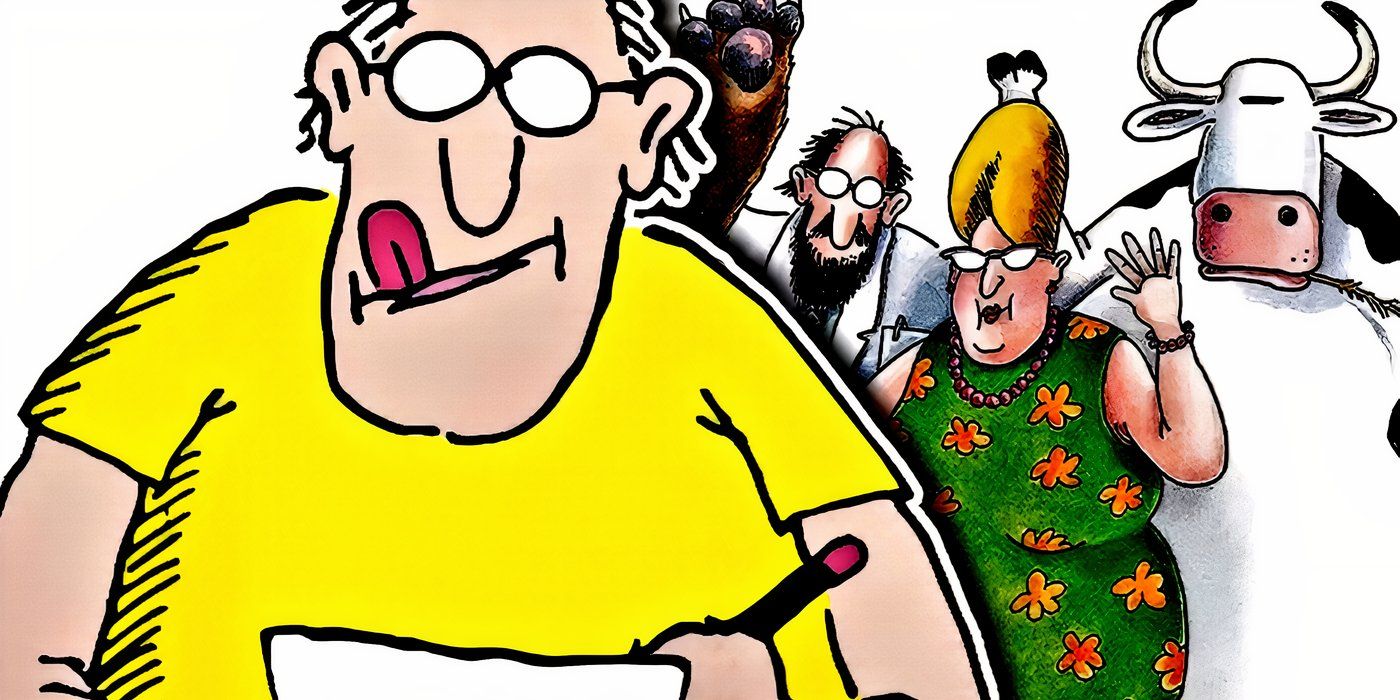
Related
Love It or Hate It, This Is What a Perfect Far Side Comic Looks Like
Many Far Side comics have a claim to being “the best,” but I’m more interested in defining what makes a great, or even perfect, Gary Larson joke.
As time went on, and Larson perhaps made peace with the inevitable end of his career, his jokes got weirder, and more elaborate, and more complex. Larson’s confidence as an illustrator also increased during this time, and consequently, Far Side cartoons became more flush with detail. In a way, 1990-1994 was as much of a golden age for the cartoon as the years 1985-1988, but there was a noticeable vibe shift from one “act” to the next. Or rather, it isn’t that the vibe shifted, but that the dial on the vibe was cranked up considerably.
Each of the “acts” of Gary Larson’s career holds its own fascination for Far Side fans.
At the start of 1995, Gary Larson officially retired from cartooning. Though he certainly left many classic Far Side jokes unwritten by doing so, he was evidently concerned by that point that his work was becoming derivative, and so decided it was time to end The Far Side. By that point, however, it had solidified itself as a cultural institution. Each of the “acts” of Gary Larson’s career holds its own fascination for Far Side fans, and the sum total of his contribution to literature is the result of all three.
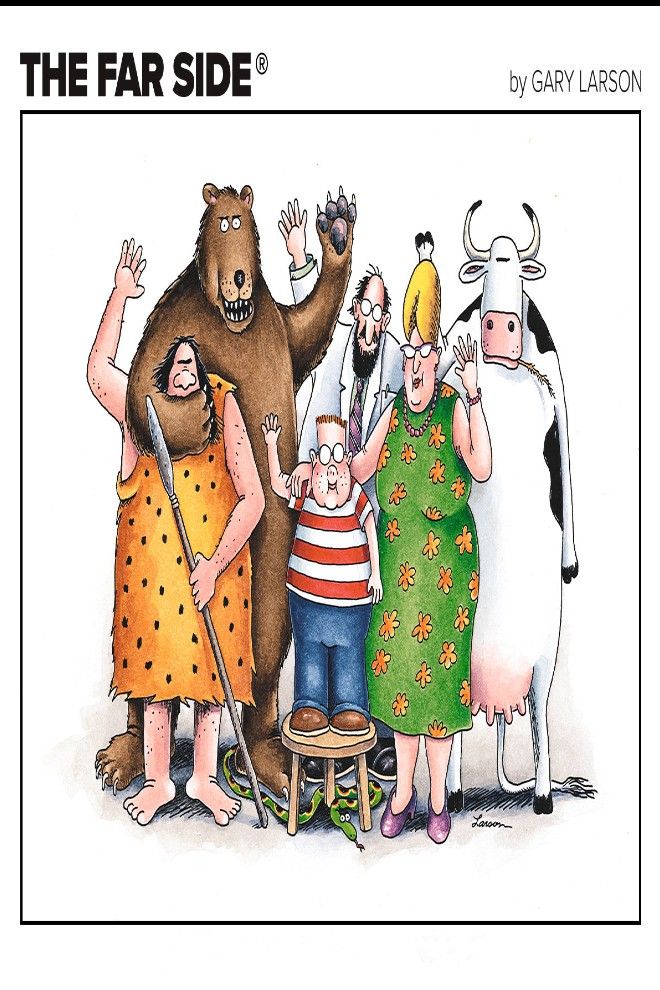
- Writer
-
Gary Larson
- Colorist
-
Gary Larson
